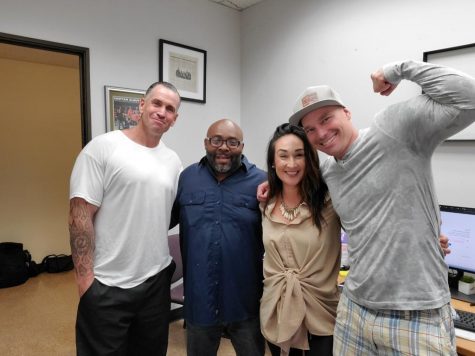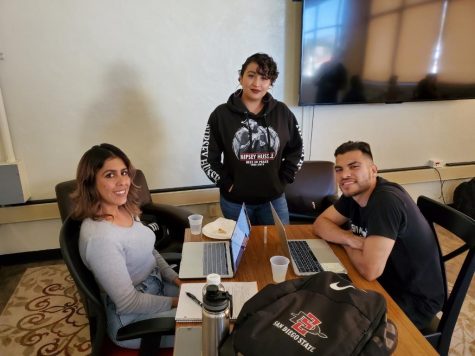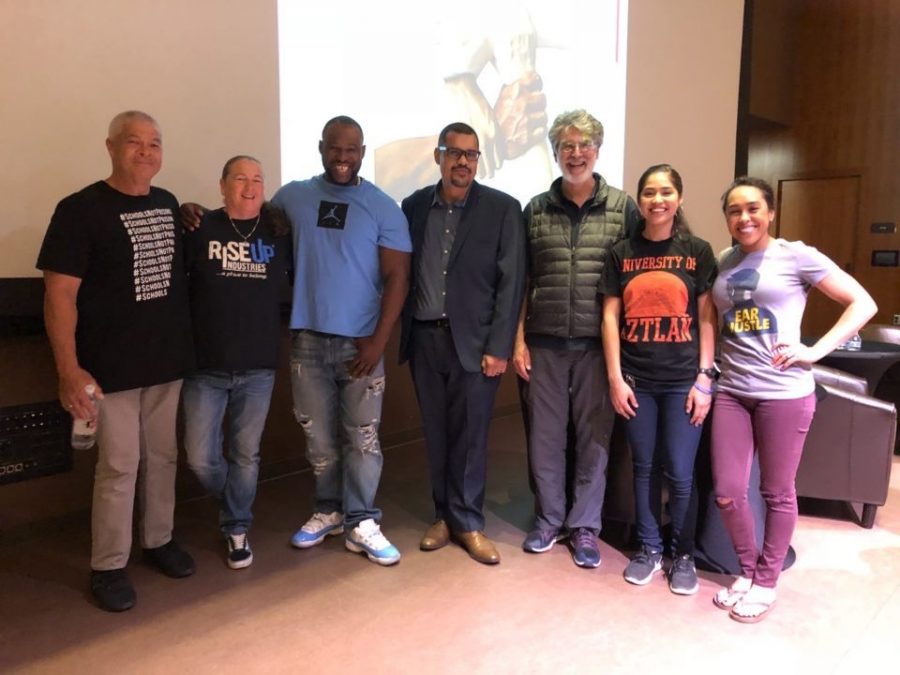During COVID-19, being confined to the four walls of our homes may be a new experience. However, the students of Project Rebound are all too familiar with it.
Project Rebound is a California State University program used to help improve the lives of formerly incarcerated students through outreach, education and resources so they desist from crime, Executive Director Dr. Alan Mobley said.
Formerly incarcerated students like psychology alumnus Moises Garcia-Perez utilized the program and its resources to stay out of jail.
“I think to myself about going to jail at this age, and I’m like, sorry, I can’t,” Garcia-Perez said. “I’m 27 and just got my degree; I’m trying to play catch up is what I’m doing.”
Garcia-Perez had his first run-in with the judicial system when he was on a five year probation from 13 to 18 years old. While on probation, his probation officer helped push him to get an education.
Garcia-Perez believes his background made others believe he was incapable of getting an education. To prove those people wrong, he attended San Diego Mesa College and earned an associate degree in psychology in 2017. While in community college, he had more encounters with the judicial system and was sent to county jail.
Mobley believes while people are in jail, they experience the dark knight of the soul, which is a deep reexamination of one’s life, often caused by trauma.
“This kind of thing very often will provoke a deep introspection, right on the part of the individual, Mobley said. “And that deep introspection is a very fertile place for personal change.”
Mobley believes this change starts with investing in communities, colleges and programs such as Project Rebound which can make prisons obsolete. To measure its impact, the program relies on its recidivism and retention rates.
Since 2016, the recidivism rate for Project Rebound students is at 0%, while the California recidivism rate is around 50%, according to a California Department of Corrections and Rehabilitation report.

According to the report, the Project Rebound retention rate for the Fall 2018 semester was 89.8% among the 287 students entering the cohort, and the CSU student retention rate was 84.3% among 65,430 students entering the cohort.
Project Rebound is currently operating in 14 different CSUs. Each campus works with correctional facilities in their service area, and they refer people from these facilities to their program, or the program nearest to the individual’s home.
Project Rebound SDSU does outreach at the sheriff’s facilities in San Diego as well as three state prisons: Richard J. Donovan, Calipatria and Centinela.
Although Garcia-Perez served juvenile and county jail sentences in San Diego, he did not hear about the program until he got to SDSU.
In early 2019, a game of dominoes with his friend who just got out of prison turned into a conversation about Garcia-Perez joining Project Rebound. At first, he was hesitant to join, but quickly realized he was able to connect with the group.
“The work itself and the people we are able to interact with and relate to […] it becomes almost like a family,” he said.
Since Garcia-Perez joined the program, he is among the students who have not gone back to jail since they started Project Rebound. Other students can attest to the impact of the program.
“I went to school with an ankle monitor and did not have a computer and got straight A’s,” Project Rebound member Sarah Orris said, “Project Rebound helped me with everything that I needed.”
Since most of the students of the program are poor, Project Rebound uses funding from the state to cover the costs of books, supplies and transportation. They also provide an emergency fund which helps students who are housing, food and transportation insecure, Mobley said.
As far as providing these resources during the COVID-19 pandemic, a lot has changed.
Some of the students have lost their jobs and are right back where they started in terms of having close to nothing. Also, the program is not allowed to do the in-person events and activities they normally do. The connection so many had been seeking since they got out of jail or prison is lost.
During the summer, Project Rebound focused on program retention, consisting of reaching out to their students, touching base with them and seeing what they need to stay in school, Mobley said. This semester, retention and giving support is the main goal, but Mobley is unsure of how the program will accomplish this outside of having regular Zoom meetings.
“When you’re not physically together […] it puts so much more of the emphasis or the responsibility for services on the service seeker,” he said. “That you’re supposed to actively advocate for yourself and actively seek out services.”

Garcia-Perez is putting a hold on his education so he can study for the California Subject Examinations for Teachers because he wants to become a math teacher.
Before Garcia-Perez was involved with Project Rebound, he was a part of the Service-Learning Tutor Program at SDSU. Here, he earned a job as a math tutor for Wilson Middle School in San Diego.
“When they greeted me with that opportunity, I was like, man, I can’t fuck this up,” Garcia-Perez said. “Like they’re blessing me with that chance to work with children and […] to realize something that I actually like.”
One student in particular connected with Garcia-Perez in a way most people couldn’t relate to.
While tutoring, Garcia-Perez noticed a 13-year-old girl in his class had been gone for two months. When she came back, she was walking around with an ankle monitor.
He knew the girl was staying at Kearny Mesa, a juvenile detention facility he also had been to when he was her age. At Kearny Mesa, the youth housed in the juvenile halls are required to attend school Monday through Friday, and go by unit numbers for every lesson, Garcia-Perez said.
Once Garcia-Perez asked what unit numbers were covered while she stayed at Kearny Mesa, the student knew he had walked the same halls as her.
“Then from there, I was able to get [her to] open [up] and I could help her,” Garcia Perez said.
Today, Garcia-Perez is using the passion he found while tutoring to climb a step higher and try to become a math teacher. His mom is at the root of his aspirations. Although she only has an eighth grade education, she was persistent with him when it came to getting his education. As a way to give back, he has his eyes set on buying her a home in the future.
Given the circumstances that the student, Garcia-Perez and other formerly incarcerated people are in, seeking out for resources can be difficult, Mobley said. However, Mobley credits Project Rebound’s success to creating a supportive peer network that allows these students to help one another, and make a broader impact for semesters to come.
“It’s a community intervention to lift up communities and then obviously it’s a society wide intervention, [so] we as a society can stop spending so much of our time and energy and resources on the so called […] criminal justice system,” Mobley said. “Instead, invest in inspiration, motivation, dignity, purpose [and] meaning.”










